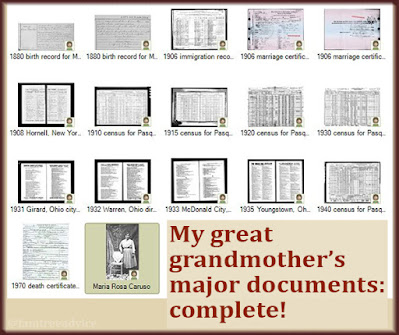When your family won't turn up, try some tricky searches.
How many times have you searched for your relative in a set of documents and found nothing? Or maybe you found a ton of results that looked like junk to you.
There's a good chance that the search results are bad because the transcription was bad. Did the volunteer transcriber have trouble reading the bad handwriting? Did they enter dramatically wrong data into the system?
Your search is doomed to fail, right? Not necessarily.
If you use partial searches, related searches and detailed searches, you may find your family.
1. Partial searches
It was common for our ancestors to have a first name and a middle name. But how were they identified on the census form? Did the person providing the information know them by their middle name only? Or by an adopted name in their new country?
Try leaving their first name out of your search completely. Fill in their age and place of birth, but use only their last name.
Try the opposite, too. I had more luck finding my grandfather on a census with only his first name of Adam. The census-taker wrote his last name in a way I hadn't expected.
 |
| Simplify your search. Toss out the extras, and your results may improve. |
2. Related searches
When a family is tough to find, look at the kids. The particular combination of children's names in this family can be the key to finding them.
Do a search that includes all the kids' names. Leave off the last name and let the search focus on finding those kids together.
You can also try using the husband and wife's first names only. That combination may be what does the job.
3. Detailed searches
I'm having trouble finding my great grandfather's naturalization papers. His name often causes me problems. His given name was Pasquale Iamarino, but on some documents he is Patsy Marino. Or a combination of those names.
So I searched using his exact birth date. I didn't find him. I also searched using his birth year and town of birth, but no name.
His naturalization isn't showing up yet. But, I once found his wife's brothers on ship manifests by searching for their last name and town of birth only.
Here's an example using Pasquale Iamarino. I did a general search of all categories on Ancestry.com. I entered only his last name, his town of origin and his exact year of birth.
The results were terrific. In fact, they include one new result that I never expected to find. It's the claim ID for his railroad retirement pension. I'll have to buy a copy of it from the National Archives at Atlanta (why there?), but this is brand new information.
 |
| So many misspellings, but the results are all for my great grandfather. |
My dad says Pasquale may have had black lung disease from years of cleaning out the furnace of coal-burning train engines. He had to retire early on disability. This pension claim may tell me a lot more about what happened to him.
Also, the Suggested Records in the right column of my Ancestry.com results are very impressive! Despite all the spelling variations, that exact birth year seems to have done wonders for my search. All those records belong to my great grandfather.
The point is to experiment. Don't give up if the results don't look promising. All these genealogical records are a gigantic database. You may need to slice and dice that database to get past bad transcriptions and misspellings.
Give it a try the very next time you don't get the results you want. Do a partial search, add in related names, or toss out the names and plug in specific facts.
Working on your family tree is a big puzzle. Clever searches are yet another piece of the puzzle.
Don't get frustrated. Get clever.









